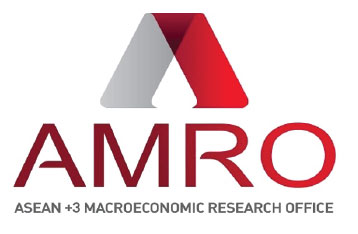As policymakers and financial leaders gather for the International Monetary Fund (IMF)/World Bank Annual Meetings and the High-Level Regional Financing Arrangements (RFAs) Dialogue in Washington, D.C. this month, one question looms large: how can we safeguard global financial stability in an era of heightened volatility and economic fragmentation?
Building walls at national borders is not a viable response. Capital flows and financial shocks do not stop at checkpoints. In recent years, the global financial cycle has become more pronounced, driven by shifts in US monetary policy, volatile capital movements, and currency fluctuations that reverberate far beyond America’s borders. For the many open and interconnected economies of Asia, these spillovers are immediate and significant.
Compounding these challenges are geoeconomic fragmentation, rapid digital transformation, and intensifying climate-related shocks, all of which have made governments more exposed to sudden and complex external shocks.
This is precisely where the Global Financial Safety Net (GFSN)—comprising the IMF, RFAs, and bilateral central bank swap lines—plays a critical role. Within this framework, the Chiang Mai Initiative Multilateralisation (CMIM) serves as ASEAN+3’s RFA and firewall. Together with AMRO’s surveillance and policy advisory functions, it provides an essential layer of protection, reinforcing market confidence and ensuring timely access to emergency liquidity.
Yet, no regional mechanism, however well designed, can stand alone. The global financial ecosystem must function as a coherent whole, with global and regional safety nets working in tandem. Collectively, ASEAN+3 economies provide over US$8.6 trillion in potential crisis-fighting resources, including US$240 billion under the CMIM—a testament to the region’s commitment to financial resilience.
The GFSN has proven its stabilizing functions during recent shocks, including the COVID-19 pandemic. However, persistent disparities in access remain. Non-reserve-currency and low-income economies continue to face significant financing gaps, and uneven coverage and coordination across GFSN layers limits its overall reliability in times of crisis.
Progress and reform in ASEAN+3
Recognizing these challenges, ASEAN+3 members have taken important steps to enhance the CMIM’s accessibility and effectiveness. The introduction of the Rapid Financing Facility (RFF) marks a major leap forward, enabling faster and more flexible responses to liquidity needs. Another milestone is the recognition of not only the US dollar but also eligible freely usable currencies (FUCs) as currencies of choice, broadening the region’s policy options and reflecting its growing financial sophistication.
Equally important are ongoing discussions on establishing a paid-in capital structure to further enhance the CMIM’s credibility and financial strength. These reforms are not mere technical adjustments. They reflect a deeper recognition that crisis prevention and resolution require speed, credibility, and collaboration.
Building bridges across regions
Asia is not alone in strengthening its financial safety net. The European Stability Mechanism (ESM) has developed robust tools for rapid response, while the Latin American Reserve Fund (FLAR) and the Arab Monetary Fund (AMF) continue to innovate to serve members’ evolving needs.
AMRO is committed to deepening collaboration with peer RFAs. This week, we signed a Memorandum of Understanding (MOU) with the AMF and renewed our longstanding MOU with the ESM to advance cooperation in areas that bolster global financial stability and economic resilience.
These partnerships should not be seen as signs of fragmentation, but rather as efforts to add complementary strength to the global financial architecture. Each RFA maintains regional ownership while contributing to the broader system of collective stability.
Toward a more coherent global financial safety net
The real challenge—and—opportunity lies in fostering stronger coordination among global and regional layers. Enhancing IMF–RFA collaboration, including through co-financing arrangements that preserve institutional autonomy, remains a key priority. What ultimately matters is not the size of individual toolkits, but how effectively institutions collaborate to serve members’ financing needs.
Joint surveillance exercises, coordinated test runs of activation mechanisms, systematic information-sharing, and aligned financing frameworks are critical for improving operational readiness. Above all, trust and transparency underpin the effectiveness of the GFSN. A financial safety net can only be as strong as the confidence that countries and markets place in it.
As we convene in Washington this week, the message is clear: financial crises do not end at borders, and neither should our responses. A strong GFSN depends on combining the strengths of both global and regional institutions.
ASEAN+3, through AMRO and the CMIM, stands ready to play its part. In an uncertain world, partnership and preparedness are our most powerful tools to safeguard financial stability.
